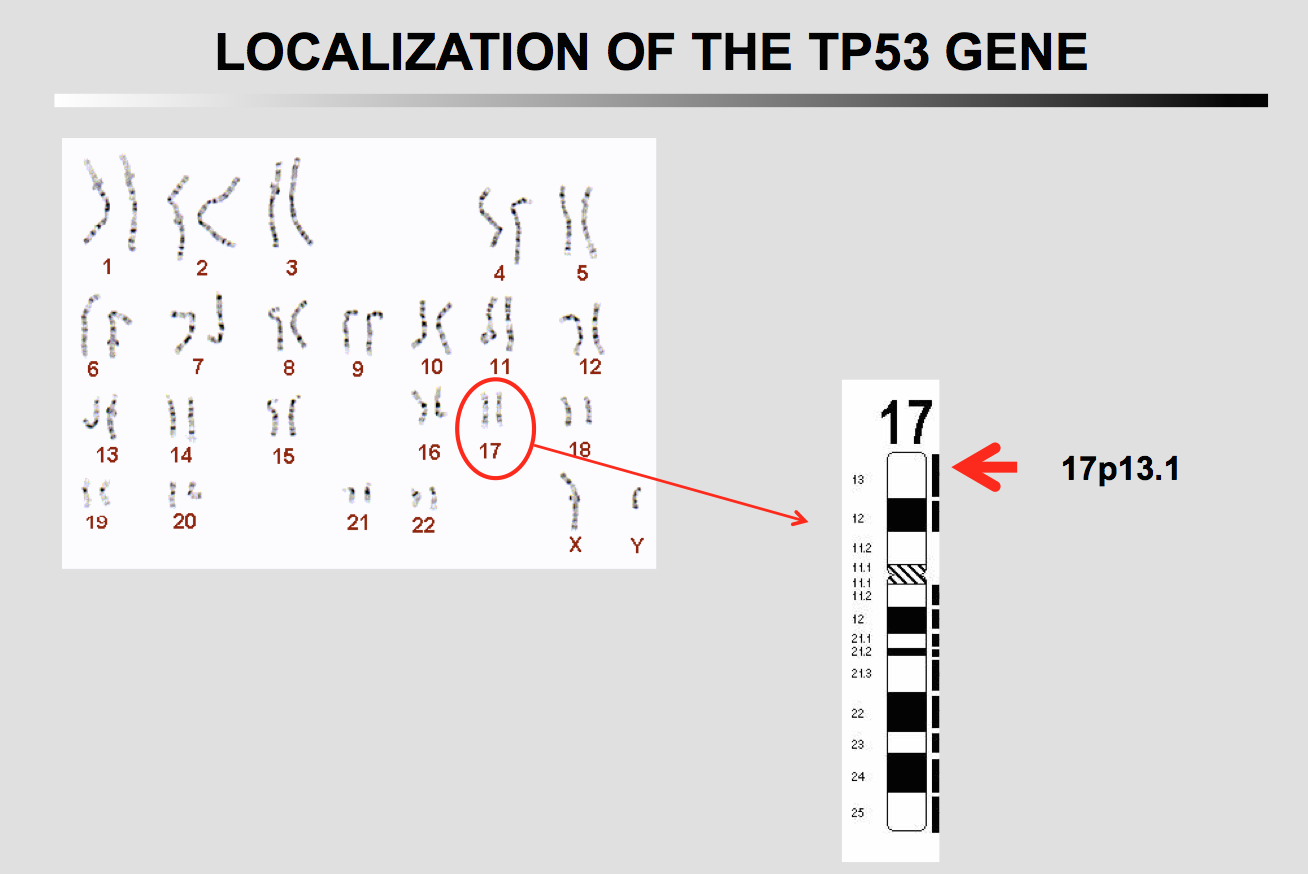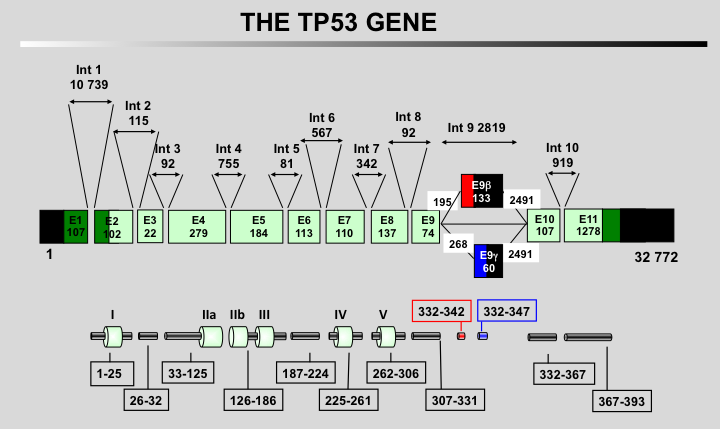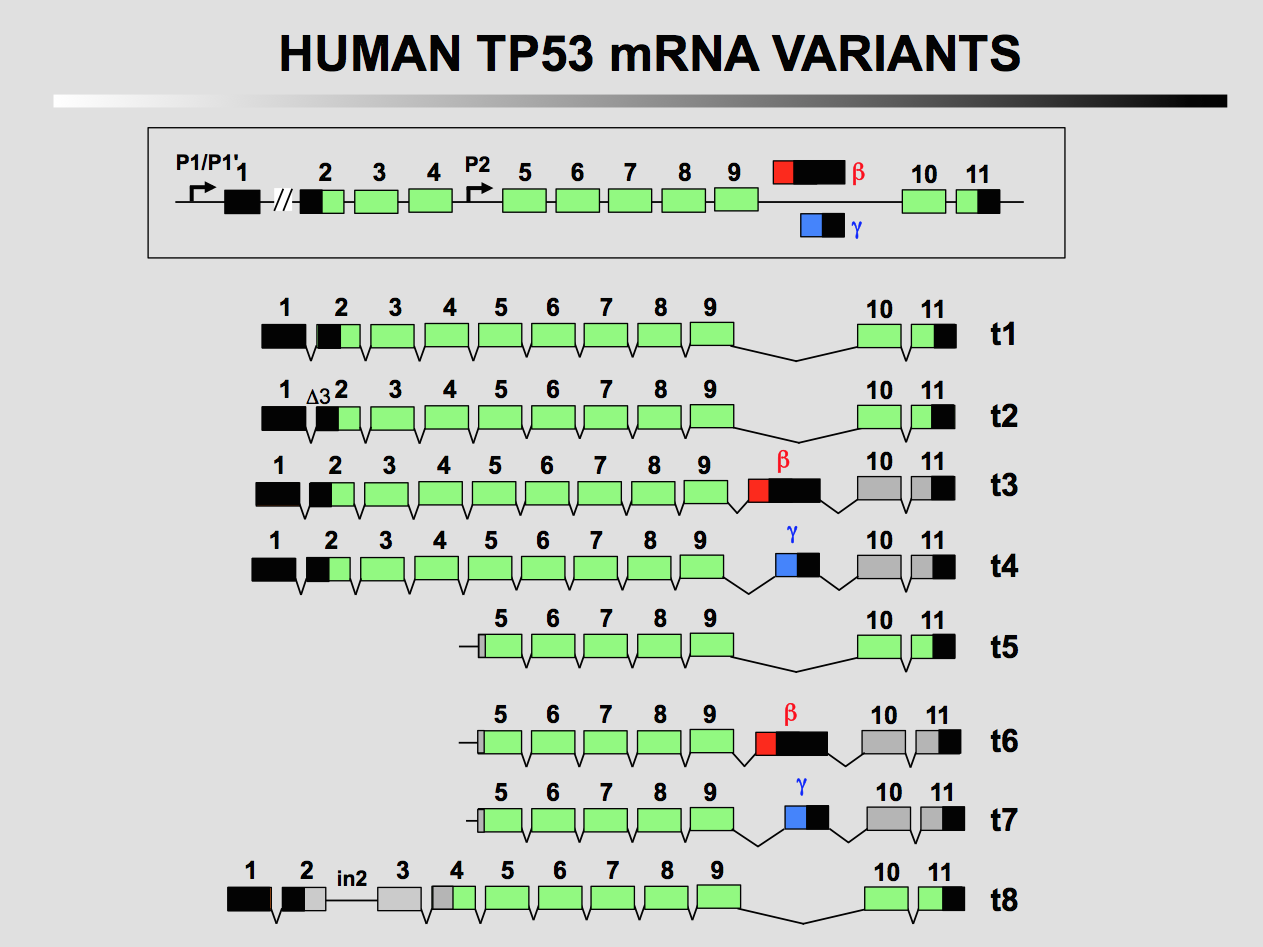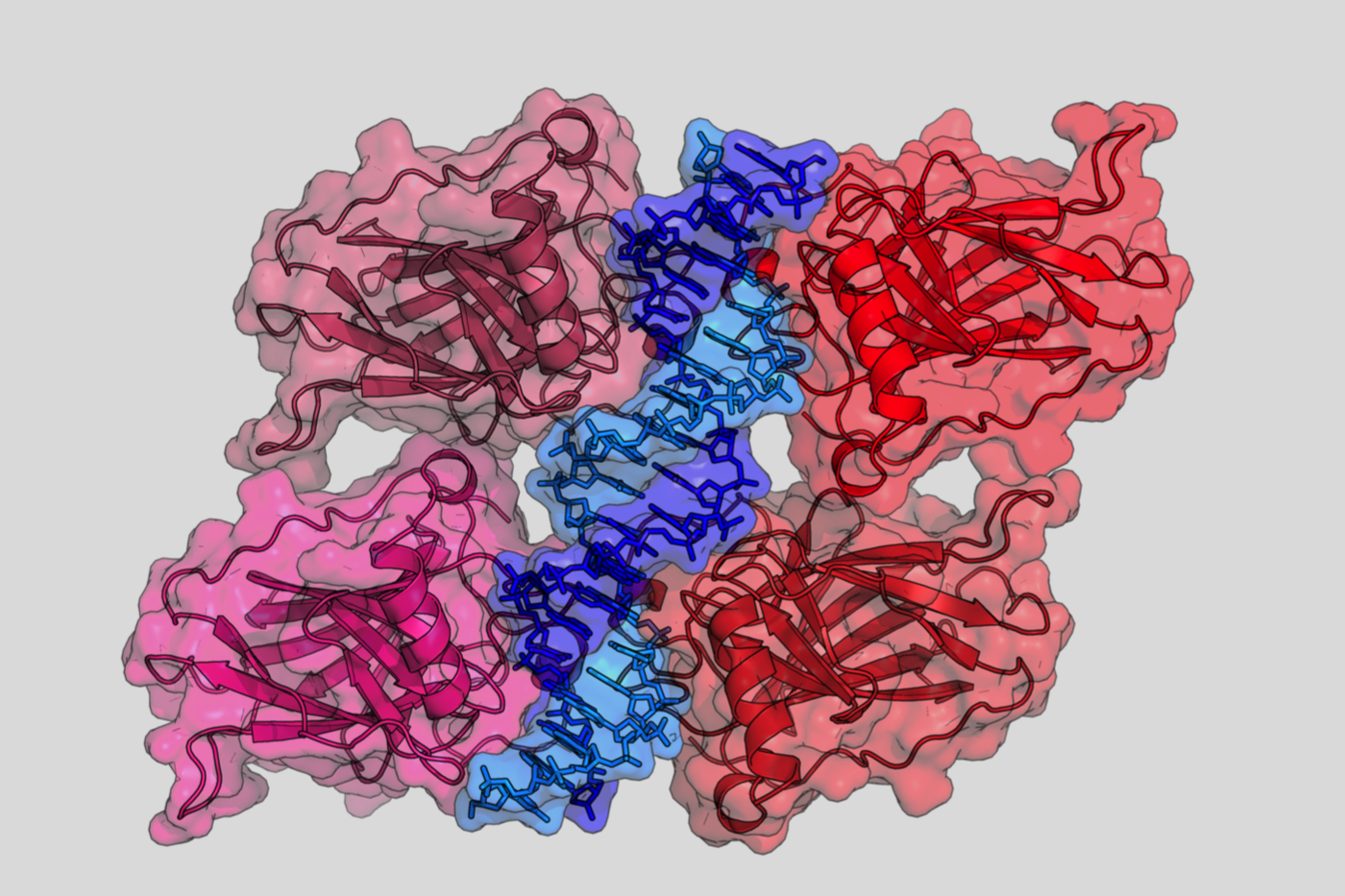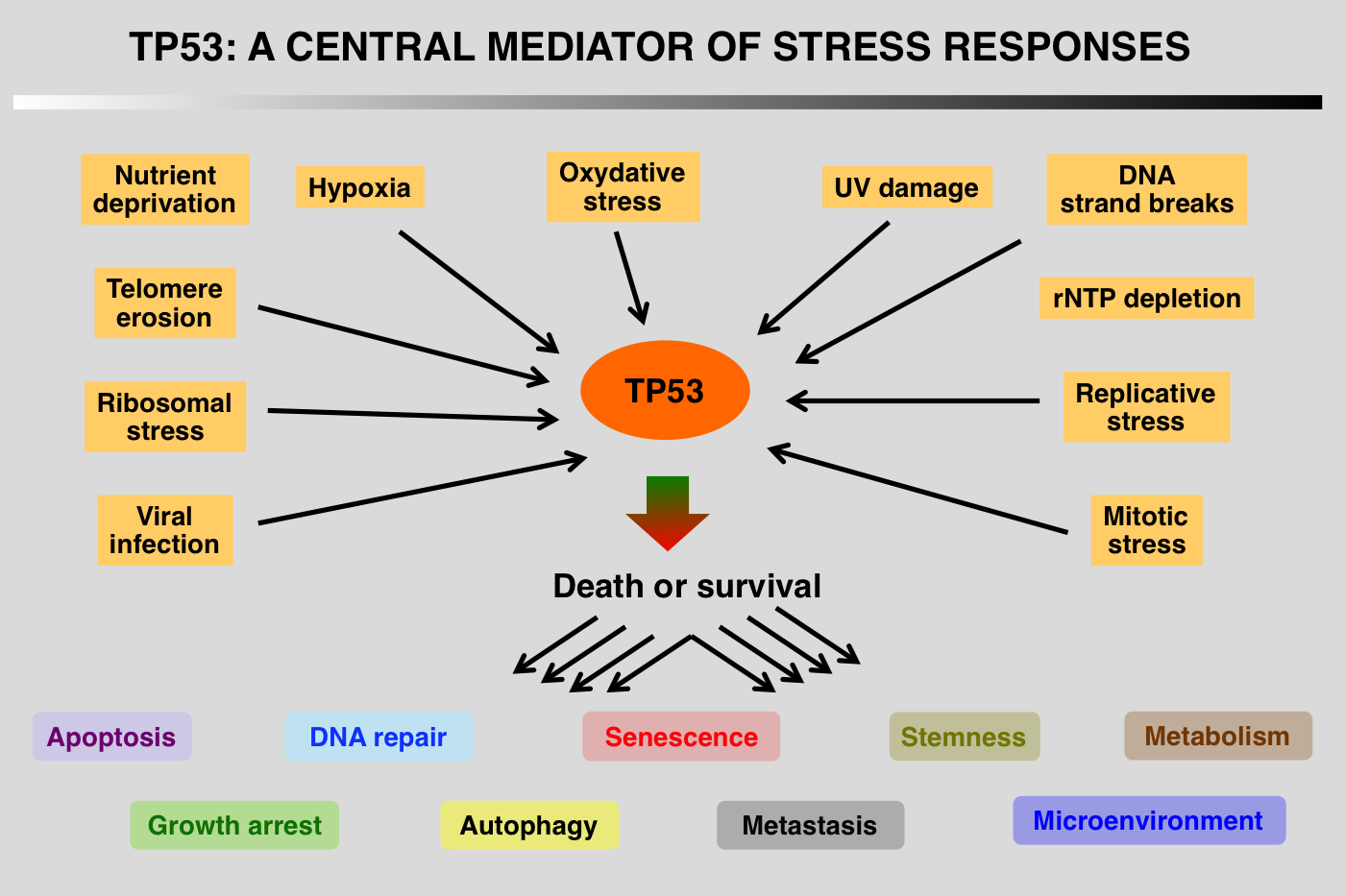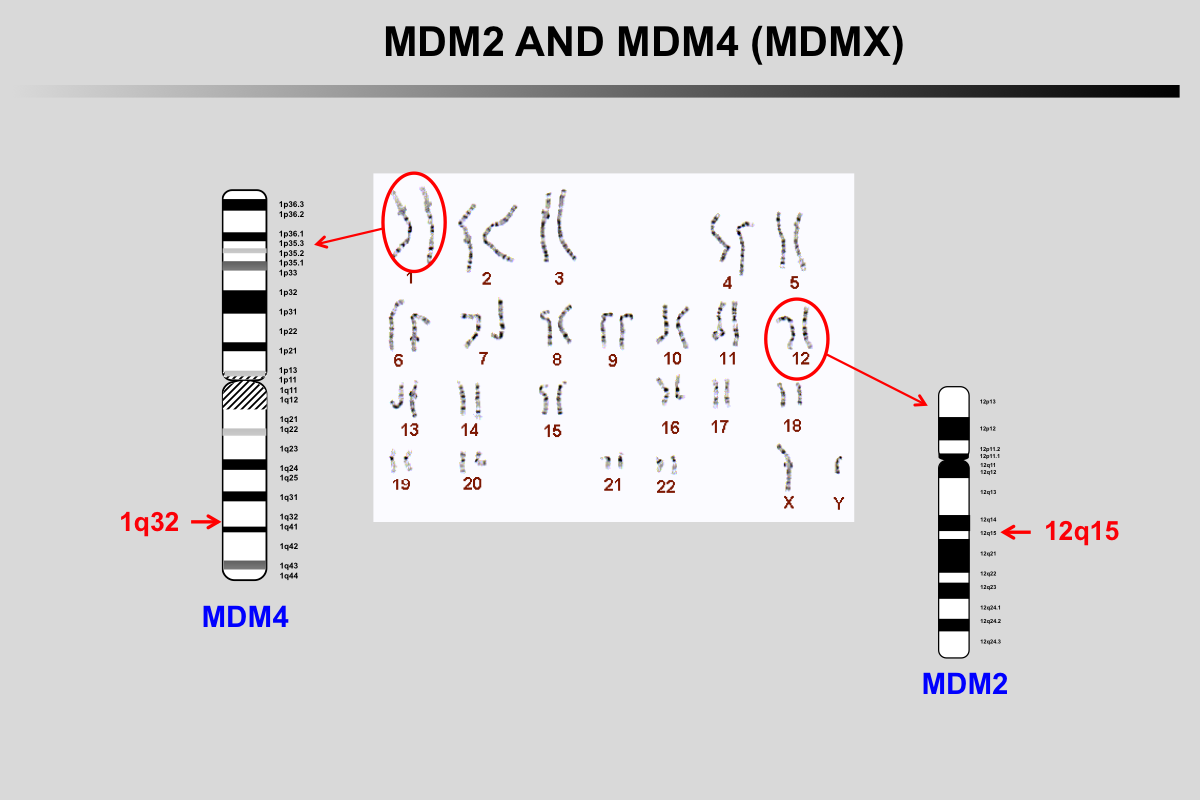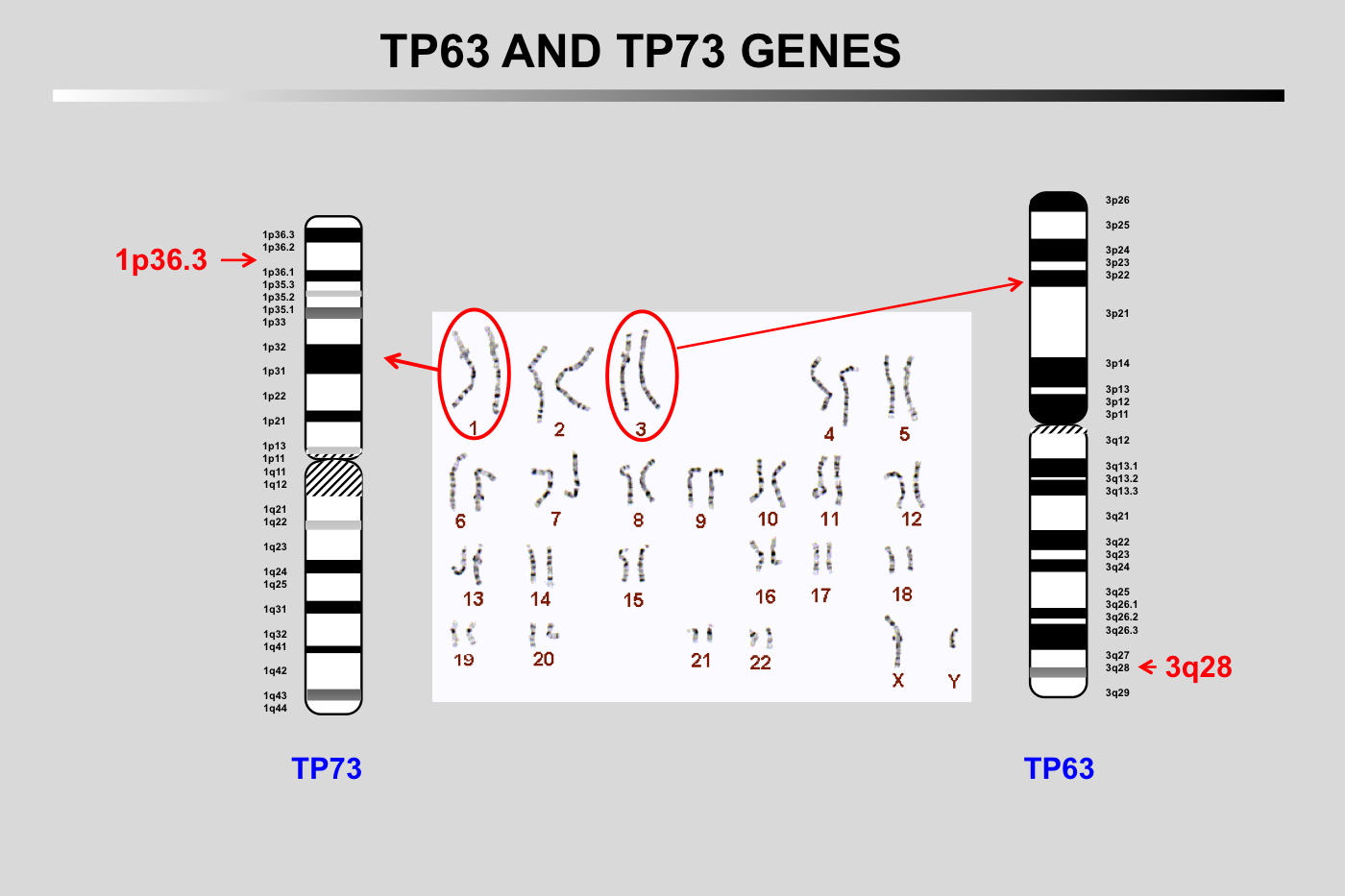The human TP53 gene organization as depicted over the past 20-plus years was simple: it produced a single transcript containing 11 exons encoding a single protein comprising 393 amino acids (Soussi and May 1989).
In 1996, Reisman et al. showed that intron 1 of the mouse and human TP53 gene encoded an untranslated transcript whose function is still unknown.
In 1997, Caput and coworkers revealed a first TP53 paralogs, TP73 localized on chromosome 1.
In 1997 and 1998, several groups revealed a second TP53 paralogs, TP63 localized on chromosome 3.
In 2005, Bourdon et al. identified two novel exons, beta and gamma, as well as a complex architecture involving various mechanisms to transcribe at least 8 mRNAs and translate up to 12 different protein isoforms. A second promoter localized in intron 4 lead to the expression of 4 TP53 transcripts encoding shorter TP53 isoforms.
In 2009, Mahmoudi et al. identified the WRAP53 gene that partially overlaps the 5' region of the TP53 gene in a head-to-head configuration. A similar gene is also found in the 5' region of the TP73 gene but it is lacking in the TP63 gene.
Click on the links below for further details

